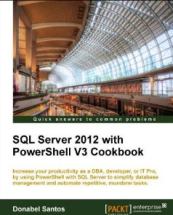PowerShell makes it easier to manage even your database backups and restore.
To do a SQL Server backup in SQL Server, you will need to use the SMO SqlBackup method. In SQL Server 2008, you will need to load Microsoft.SqlServer.SmoExtended assembly otherwise, you will get the following error:
Cannot find type [Microsoft.SqlServer.Management.Smo.Backup]: make sure the assembly containing this type is loaded.
Other assemblies you may want to load are:
[System.Reflection.Assembly]::LoadWithPartialName("Microsoft.SqlServer.SMO") | Out-Null
#Need SmoExtended for smo.backup
[System.Reflection.Assembly]::LoadWithPartialName("Microsoft.SqlServer.SmoExtended") | Out-Null
[System.Reflection.Assembly]::LoadWithPartialName("Microsoft.SqlServer.ConnectionInfo") | Out-Null
[System.Reflection.Assembly]::LoadWithPartialName("Microsoft.SqlServer.SmoEnum") | Out-Null
Also another point to note is the types of backup you can do. BackupActionType specifies the type of backup. Valid values for this option are Database, Files, Log
Here’s the script. This script is for one specific database. If you want to use this for several database, you will just need to use this code inside a loop.
Better yet, put this in a function, and call this in a loop. I will try to do that sometime soon.
Read the rest of this entry »





